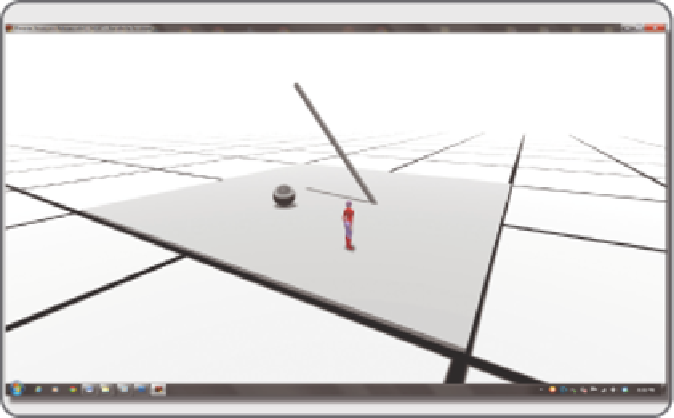Game Development Reference
In-Depth Information
FIGURE 4.5
Screen grab from OpenSim showing a virtual interpretation of the 3 fundamental elements of composi-
tion: a point (shown as a sphere), a line (shown as a long thin box), and a plane (shown as a lat box on the grid surface).
point will be the center on a line between the two sides, and in radial symmetry, that point will be at the
intersection of all visual lines that connect the elements in the composition. Asymmetrical balance is more
abstruse; the center between unequal sides can become a visual tug-of-war, as you look back and forth
between the elements on each side, weighing them in your mind's eye. Symbol and meaning can enter into
this balance as well. Suppose a tiny mouse was on one side and a huge elephant on the other. They are facing
each other in a standoff. The elephant's legendary fear of mice makes its huge scale less important, and the
mouse standing his ground bravely makes the mouse seem more important in the composition. This is an
example of psychologically based asymmetrical balance.
4.3.5 h
ierarChy
The hierarchical aspect of design composition is seen all around you. Think of the position of carved animals
on a totem pole or the height of a king's throne in relationship to the rest of the room. Higher, taller, and nearer
imply importance in a composition, as you can see in Figure 4.7. If there is something in your 3D design that
you want the observer to consider important, try to put it in a place where it will be seen immediately and
seems to be a focal point from all directions. You should lead the eye of the observer to the most important
element in a balanced composition with clear hierarchy.
4.3.6 s
Cale
Figure 4.8 shows some extreme examples of the use of scale in a composition. The relationship between
the avatar and the surrounding objects is always a source of dynamic tension in a visual composition. It is
always interesting to play with unexpected scale. For instance, you could enlarge the scale of something
typically small into a gigantic form, just as Claes Oldenburg has done with his giant clothespin in downtown
Philadelphia. Of course, this is a much easier endeavor and requires much less public funding when you do
it in a virtual Philadelphia.

